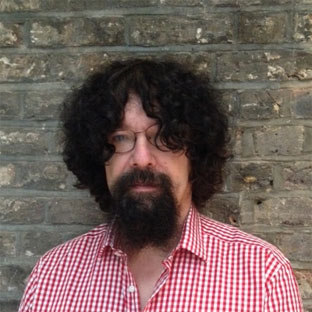‘On a scale of one to 10 how much does it hurt?’ A question frequently used by medical practitioners but it is one that may be fundamentally flawed.
One: How are the units measured, who decides the scale? And, two: each person has a different perception of pain and a different threshold to it.
When my wife shares a cold with me I have terminal man-flu but she just carries on.
My eight or nine on the pain scale, registers a meagre two or three on hers.
So how can medical teams gauge the amount of pain a person is suffering, or what it feels like with all the variables involved? The answer may be quite surprising. And it’s not something only recently discovered. It doesn’t come from the sciences but instead from the humanities; to be precise art, history and language.
There is no arguing that medicine has undergone a quantum leap forward in the last 100 years. The creativity and innovation used to develop new treatments, procedures, find and develop new medicines and find cures has been phenomenal.
But along with the rapid advancements in technology has come an equally rapid change of attitude.
A change from the subjective patient narrative to one where more emphasis is placed on objective practitioner diagnosis. Where tests replace patient stories; where statistics replace language; where costs and waiting times replace time and conversations.
Now I am not suggesting this is a bad thing; or that the medical profession has become less caring and compassionate than their predecessors a century ago; that the tests, procedures and medications aren’t better and, have better outcomes than those offered to our ancestors. But it seems that in all these advancements in medicine something has been lost and that’s the language of pain.
Throughout history, poetry, storytelling, art, music, dance and drama, have all been used to convey the angst, anguish, torment, trials and tribulations of pain with great effect. We can all think of plenty of examples. So why do we no longer use them?
Let’s step back in time… . Perhaps the doctors of 100 years ago still have something to teach us and the medical profession. For them patient pain stories were an integral part of making an accurate diagnosis.
The patient had the power to create their own pain story. They were the author of their ailment which the doctor used to help prescribe the course of treatment.
Is the symbiotic relationship between the need for quick diagnosis, treatment and (hopefully) cure and the financial constraints and target demands put on an already stretched NHS to blame?
Is this the reason why when it comes to nociception we suddenly seem to become bereft of words other than the ‘hello doctor… it hurts here, or I have a pain…’ the narrative and description of symptoms, or injury being lost, forgotten.
This was one of the varied themes at the RSA-supported Critical Voices 2015 which brought a diverse collection of people, ideas, the arts and medicine together to challenge, and rethink perspectives on health and well-being. Two presentations, particularly, piqued my curiosity.
The first, a video interview with Joanna Bourke author of the 2014 book: The Story of Pain: From Prayer to Painkillers. She spoke about how pain; the way we respond and the language we use to talk about it has changed over the last three hundred years.
The second, a presentation by Professor Joanna Zakrzewska and Deborah Padfield. They presented work from a three-year interdisciplinary project which researched the value of visual imagery in diagnosis and management of chronic pain. For more details: Mask:Mirror:Membrane.
During the research Padfield co-created, with patients, more than 1,000 photographic images that visualised the pain they were suffering. From the material collected she made a series of 54 cards which were given to patients to view and select which image, or images, reflected their pain. The cards that the patient selected were then used as a communication tool in the clinical consultation at UCLH. Consultation time allocation was extended to allow conversation between patient and clinician to take place; where diagnosis was a synergy of visualisation and examination.
The benefit of using the arts, whether through painting, writing, music, or dance, as therapy or treatment is well documented so why do we not use it in other aspects of our own personal journey.
According to many futurologists we are soon to enter The Age of the Storyteller and we can already see some evidence of this in our everyday lives.
Many of us no longer buy things without knowing its backstory; where it came from; how it was raised, built, or grown; and its journey to the store or home.
So why would we not create stories of our own life? Stories in which we are author of it. After all, not matter what medium is used, we all have the Power to Create.
You can see videos of all the presentations made at this year’s Critical Voices event on their You Tube channel Critical Voices 2015.

Join the discussion
Comments
Please login to post a comment or reply
Don't have an account? Click here to register.
I'd like to recommend the research team contacts a charity in Brighton called Grassroots who have developed an online app to help those considering suicide, bereaved people and carers.
http://www.prevent-suicide.org.uk/
https://www.facebook.com/GrassrootsSP